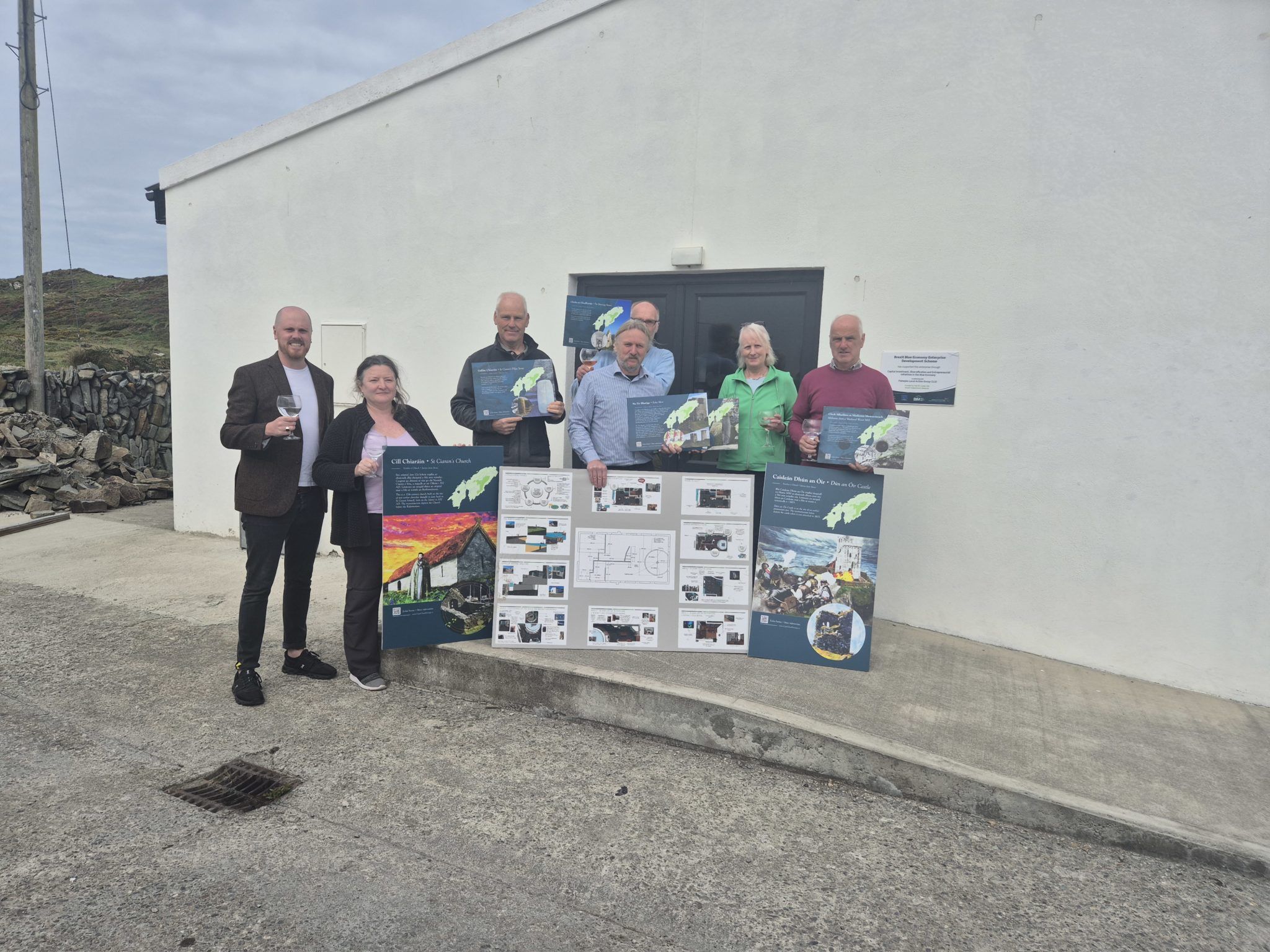A €1m fund from two government bodies will pave the way for the creation of a new heritage and Fastnet centre on Cape Clear Island in time for next year’s tourism season.
A lot of the groundwork for the exciting new project has been done, according to islander Séamus O Drisceoil.
The premises, a former factory unit, is at an advanced state of readiness and the island co-operative has made a start using Balami funds, otherwise known as the Brexit fund.
The co-op previously received €13,731 from the Brexit fund and added matching finance to create an interactive tour of the Fastnet lighthouse, a new website, and an interactive, bilingual map of the island’s North Harbour.
They have also commissioned bespoke museum cabinets and installed flagpoles outside the building, and close to the Grotto.
Séamus said the latest round of funding – 80% of which will be provided by Fáilte Ireland and 20% by Údaras na Gaeltachta – will bring the project to an entirely new level.
 The island's focus group which has already got a head-start with the new heritage centre, includes, from left to right: Ruairí Ó Donnabháin, Joan Kearney, Patsy Ó Drisceoil, Kevin Mc Cann, Séamus ÓDrisceoil, (behind) Catherine Ryan and Seán Ó Drisceoil.
The island's focus group which has already got a head-start with the new heritage centre, includes, from left to right: Ruairí Ó Donnabháin, Joan Kearney, Patsy Ó Drisceoil, Kevin Mc Cann, Séamus ÓDrisceoil, (behind) Catherine Ryan and Seán Ó Drisceoil.
The organisations will work together to commission and create sets off-site that can slot into the building. ‘We have a focus group working under Comharchumann Chléire Teo,’ said Séamus, who predicts that the off-site set pieces will be produced to a very high standard and will make the centre a major tourism attraction.
Sustainability will be a key issue in the development of the centre because it is located within easy walking distance of the main pier in the North Harbour, he added.
Planning permission is already in place, so it’s ‘all systems go’ for a project that will showcase the island’s linguistic heritage despite being one of the smallest gaeltachts in the country.
‘Cape Clear Island has an extraordinarily rich history with the famous Cape Clear Stone indicating 5,000 years of human occupation and a connection to Newgrange and Ireland’s Ancient East,’ said Séamus.
He added that it also has a rich and diverse natural history with a famous bird observatory on the island.
‘Trojan work has been done by Cape Clear Heritage Society to record its folklore and history with various publications available,’ Séamus concluded before thanking everyone who helped to make the project possible.










